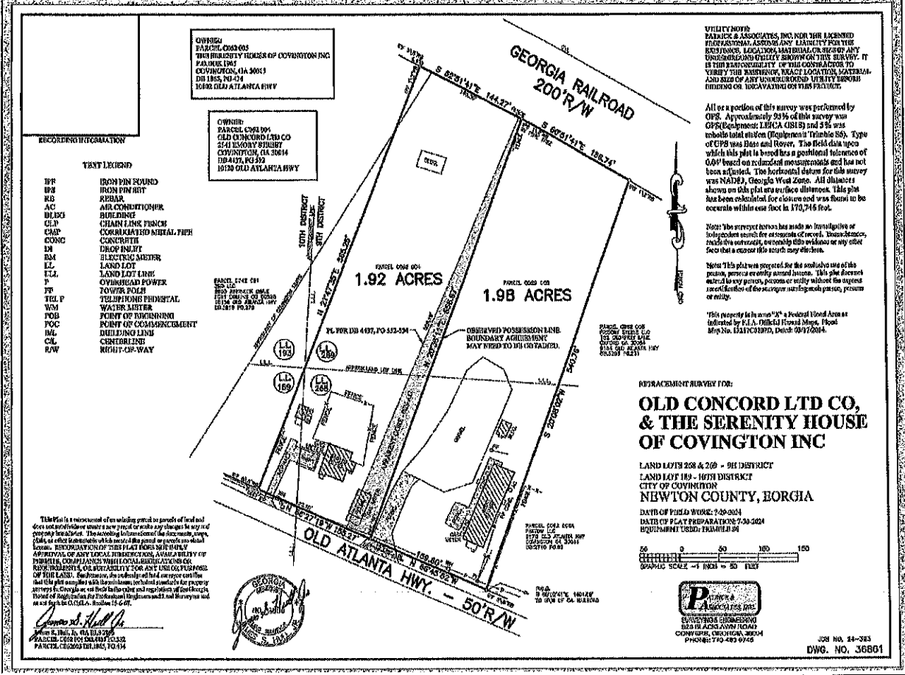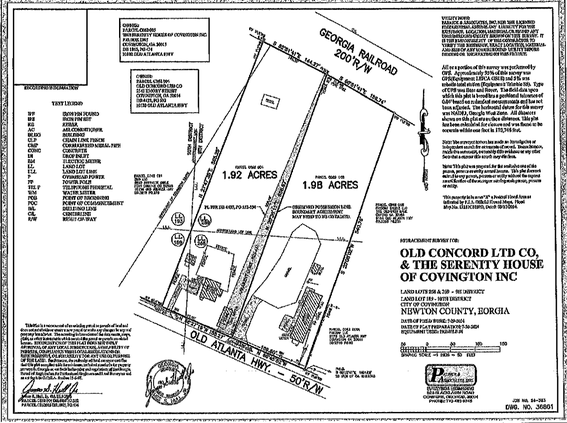COVINGTON, Ga. – The Covington city council unanimously approved a special use permit (SUP) for a halfway house and transitional housing facility for incarcerated individuals in the Georgia Accountability Program.
The facility will be located on Old Atlanta Highway, according to city officials. The Georgia Accountability Program allows a court system the option to sentence nonviolent property and drug offenders to the program instead of residing in jail.
Because the property is in a mixed-use area, the proposal requested relief to the code requiring that home size be 750 feet. This 1.92 acre small residential cottage court community will have no more than 12 homes averaging 288 feet and will provide housing to participants in the 18 month Accountability court program.
For these transitional housing facilities there are several regulations that must be met. These conditions include:
- No more than six residents, not including the owner and owners family, if residing on the property;
- Available parking in the side yard or an enclosed garage;
- The outside of the building must be compatible with the buildings on the same block, in terms of height, style, and other qualities;
- If meals are served on the property, they must only be served to the residents and owners family;
- Services shall not be provided to people who are not regular residents of the facility;
- At least 1000 feet shall separate a transitional housing facility from another housing facility.
The ideas for this program began when Chief Judge W. Kendall Wynne, Jr. who runs the Georgia Accountability Court for the Alcovy circuit approached applicant Rob Fowler about wanting to house incarcerated individuals in a rehabilitation program.
Randy Vinson, a developer from the area, was approached by Fowler to help with the layout, and since then has been arranging the housing plan into phases. Vinson told the council that the reason they requested 288 feet is because it would be best fit for individual living spaces.
Vinson said that the 12 homes won’t be built all at once, but will be done methodically.
“It will be built one at a time and allow the program to kind of grow organically, " Vinson said. “As it succeeds they'll move on to add another one, and another one.”
Thomas Spillers said that what they are trying to do is provide incarcerated individuals a safe place to stay and the ability to live a life of recovery through success in the accountability program. By doing this, they can acclimate themselves back into society.
“We’re trying to keep people that have drug and alcohol problems out of jail,” Spillers said. “That’s not where they belong, they need a leg up.”
Where normal cottage courts would allow for whole families in it, this implementation would only allow for one to two individuals. Spillers noted that they don’t want people to isolate, which is something that is usually done during recovery.
Council members Kim Johnson and Anthony Henderson brought up concerns over what would happen if the program failed. However, Vinson said that if this scenario occurs, he would sell the land and homes.
Council member Jared Rutberg asked if there would be physical barriers, such as fences due to businesses in the area. While that is not in the plan, it was noted that with council recommendation and approval, it could be added.
Another concern was brought up by council member Travis Moore, who worried whether the individuals would be violent, but was assured by the applicants they are not a threat to safety.
Henderson made the motion to approve the permit for cottages with conditions that if the program fails, they cannot sell the homes at market rate and must come back to the council if they consider that. They could, however, sell the land with knowledge that the homes would be destroyed or not used, without council approval. Rutberg seconded the motion and it was unanimously approved.
Additionally, Rutberg made the motion to approve the transitional facility with conditions that there be a fence that would separate adjacent residential properties. Johnson seconded the motion and the council voted all in favor.





